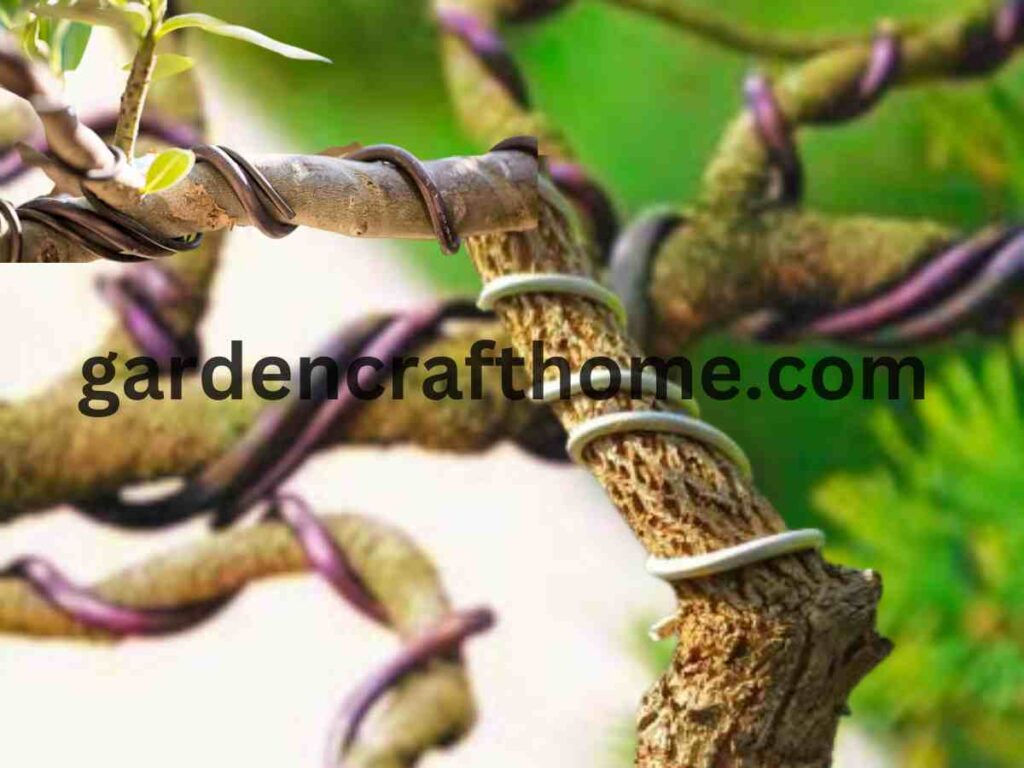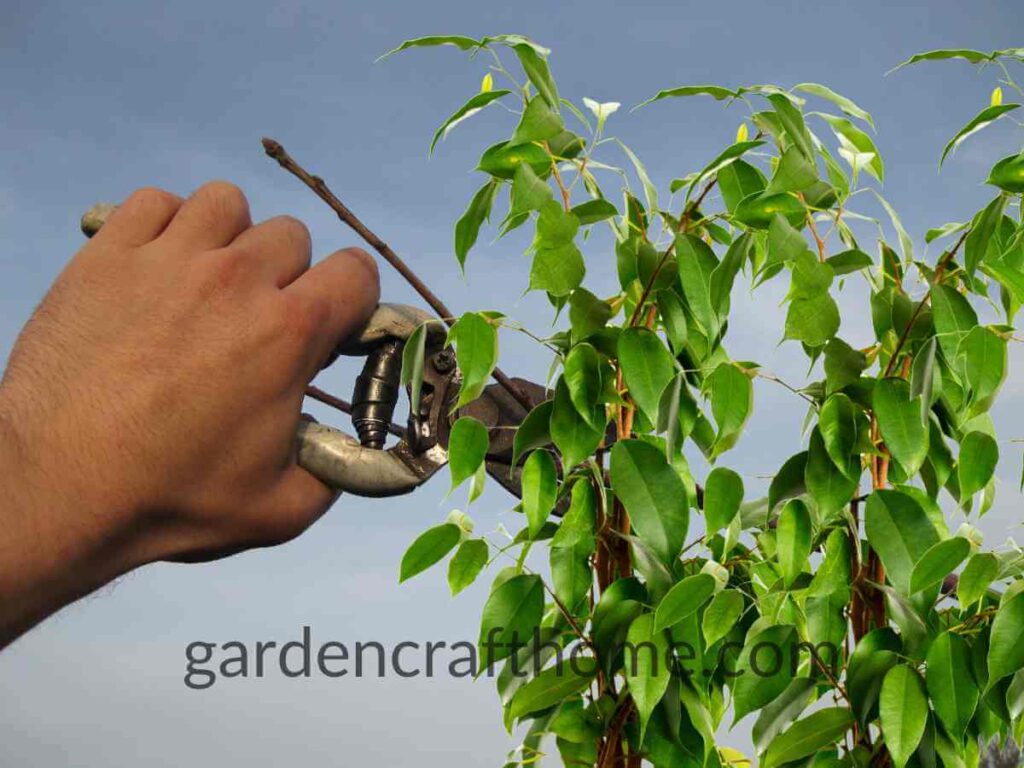Do your Ficus benjamina has spots or dry leaves could be the result of pests, infection, overwatering, or a bad environment.
I am familiar with all this because I have solved my plant issues when it comes to dry leaves.
In this post, we see the 7 main reasons why Ficus benjamina has spotted brown or dry leaves and a possible solution.
Have you read my other article on why pothos has spotted or dried leaves? If so, click here to read it now.
Let’s not waste time and get straight to the point.
Why Does Ficus Benjamina Has Spots, Brown Or Dry Leaves?
In most cases, the leaves of Ficus benjamin become brown or dry due to issues related to its metabolism, such as cold, lack of light, low humidity, or drastic changes in one (or more) factor.
In addition, there are pathogens like illnesses and parasite infestations, as well as cultural factors such a surplus or shortage of water and minerals.
I want to emphasize that it is very typical to see a decline in the leaf foliage throughout the fall season when temperatures drop and the days get shorter and darker.
Numerous leaves turn yellow and brown, dry out, and subsequently fall. To read more on the main reasons why Ficus benjamina has yellow leaves, click here.
All this goes on until the ficus finds a new balance between the volume of the canopy and the photosynthetic capacity.
That is, the amount of energy the plant needs and what it is capable of producing.
The same applies even after purchasing a new plant because domestic environmental conditions are very different from those in which the plant grew and acclimatized.
Light, temperature, humidity, and air circulation are inevitably different.
But now let’s see in more detail the 7 main reasons why Ficus benjamina has stained or dry leaves.
And so, what should we do to solve the problem and prevent it from happening again in the future?
Changes In Environmental Conditions
Any “obvious” alteration to the surrounding environment affects one or more components of photosynthesis, transpiration, and other physiological processes, which in turn affects the plant’s metabolism:
such as air movement, temperature, humidity, light intensity, and photoperiod.
A slower metabolism results in less energy being produced by the plant, which makes it impossible for it to retain its previously grown leaves.
However, when conditions improve, the plant starts producing new leaves and reforms the lost foliage.
Some typical examples are the post-purchase period, moving from outside to inside the house or from one room to another. Or, as mentioned before, simply with the arrival of winter.
Every time, the environmental conditions worsen compared to those to which the plant is acclimated.
The Ficus benjamin loses its leaves, and the foliage is deteriorating. In some cases, to the point of remaining bare.
To learn more about why Ficus Benjamin loses its leaves, click here.
What to do
Make sure the surroundings are appropriate before moving a Ficus benjamina, whether you just bought one or want to relocate it to a different room.
Lots of light, comfortable humidity and temperature levels, and shielding from chilly breezes.
You will undoubtedly see a lot of leaves dropping as October approaches, particularly if you left them outdoors over the summer.
Placing the plant in the brightest place possible will limit this phenomenon.
Parasites
Like most houseplants, Ficus benjamin is subject to numerous phytophagous parasites, such as aphids, scale insects, thrips, etc.
These insects, feeding on the sap of the plant, make bites that, over time, become yellow or brown.
The more extensive the infestation, the more visible the lesions will be.
Some pests, such as aphids and mealybugs, are visible to the naked eye with careful inspection of the foliage.
Others, like thrips and mites, are too small or mobile to be easily spotted. In these cases, it is easier to diagnose them based on the symptoms.
What to do
While an early-stage infestation can be treated with the use of oily products such as:
Neem oil or white mineral oil, in the case of widespread problems, each parasite must be treated with a specific product.
| Prevention | Specific care | |
| Aphids | neem oil / white mineral oil | Closer |
| Cochineal | white mineral oil or potassium soft soap | Closer |
| Thrips | neem oil / white mineral oil | Spinosad or Pyrethrum |
| Mites or red spiders | neem oil / white mineral oil | Acaricide |
| White fly | neem oil / white mineral oil | Closer |
Lack Of Light
Since these are environmental factors, light and cold (which we will talk about shortly) are linked to point no. 1 just mentioned.
In conditions of poor light, Ficus benjamin tends to deteriorate rapidly; the leaves turn yellow, become stained, dry, and fall.
Conversely, when the light is abundant, the plant vegetates very quickly, producing dense and showy foliage.
What to do
Move the ficus to a brighter location or possibly consider supplementing natural light with an LED plant lamp [aff Pro].
During spring and summer, when temperatures are stable above 15°C, you can move the benjamina outside, even into full sun, if done gradually.
Infectious Diseases
Among the causes why Ficus benjamin can have spotted leaves, we find a series of diseases that can be grouped into 3 groups:
- Fungal
- Bacterial
- Viral
Fungal diseases are the most common and have the characteristic of increasing in humid environments with poor air circulation.
Symptoms vary depending on the fungus in question. Still, in most cases, they are characterized by brown spots within the leaf blade or along the edges.
The brown color indicates that the tissue is already dead. At the same time, where the infection is still active (i.e., around this area), we find a more or less extensive yellow halo.
What to do
To prevent the ficus from being affected by fungi, we must first ensure good air circulation, both outside and inside the foliage.
Correct pruning can help us with this, as well as improving the penetration of light into the foliage.
To learn how to Prune Ficus Benjamina correctly, click here.
No draft is needed; keep the air moving and not stagnating around the leaves. This happens easily when the ficus is placed in the corner of the house, away from the window.
The closer it stays to the wall, the less air circulation there will be.
If the plant is already infected, you must first isolate it from the others. Then, two approaches can be followed, depending on the extent of the damage:
- Bring the ficus into a water deficit, keep it in a dry environment, and remove all the stained leaves. Until the problem is resolved (if it is resolved),.
- In the case of serious or resilient fungal infections, the plant must be treated with a systemic fungicide.
Cold
When temperatures drop below 10–12 °C or in the presence of cold drafts, the leaves of Ficus benjamin become stained and fall.
The more marked the temperature excursion, the more evident the damage.
In addition to the direct effect on the leaves, it must be added that the cold and lack of light significantly slow down the plant’s metabolism.
Also reducing the need for water and nutrients, as we will see shortly.
What to do
Place the ficus in a warm room with temperatures above 18–20 °C. Better around 22–28 °C.
Physiological minimum temperatures can drop to 12–15 °C, but some leaves will inevitably fall.
If you keep the plant outside during the summer, make sure you bring it back indoors when the nighttime minimum temperatures are around 15°C.
Overwatering
If we give Ficus Benjamina too much water, the first visible symptom is the appearance of yellow or stained leaves.
This is a symptom of root asphyxia (lack of oxygen at the root level) or root rot. Usually, one problem follows another.
Contrary to what one might think, excess water is not due to the amount of water administered during watering but rather to:
- Watering frequency
- Pot size
- Substrate type
- Scarcity of light
- Temperatures are too low.
When you water the ficus, it is completely normal to bring the pot to saturation. That is, water until a small excess of water flows from the drainage holes of the pot.
Rather, you must be careful to water only when the soil is completely dry; do not use an excessively large pot, and prefer a more airy and draining substrate than the classic universal soil.
Furthermore, when the light is poor, or the temperature is around 15-20°C, it is important to reduce watering as much as possible.
Because the plant’s water requirement is minimal, it is easy to stumble upon water stagnation.
To learn how to water ficus properly, click here to read the next article.
What to do
If the problem why Ficus benjamin has brown leaves is excess water, the ideal would be to dig up the plant to take a look at the roots so as to understand if it is rot or just a slight root asphyxiation.
Depending on the extent of the damage, the procedure will be different.
If the roots are healthy, just let them dry well in the soil. If it is root rot, you need to dig up the ficus, remove all the rotten roots, and repot in new soil.
If you intend to reuse the vase, you will have to disinfect it. To learn more about how to repot a ficus, click here.
I recommend adding 1 handful of charcoal to the soil for every 3 litres of soil to reduce the risk of rot starting to increase again.
In the case of large plants, it is not possible (or at least practical) to remove them from the pot to check the roots, and for this reason, we proceed by trial and error.
Initially, let the soil dry well. If, after the first watering, the problem starts again, you need to intervene with repotting (with proper removal of rotten roots) or by treating with a systemic fungicide.
Accumulation Of Salts
Excessive salinity within the substrate can prevent the ficus from correctly absorbing water and nutrients.
In this case, we talk about salt accumulation, which is usually caused by a gradual accumulation of unused fertilizer or limescale present in tap water.
As the plant struggles to hydrate and absorb mineral salts, symptoms of salt buildup show up in the form of dry tips and stained brown or yellow leaves.
In the diagnosis, in addition to the symptoms at the leaf level, it is obviously necessary to take into consideration the fertilization regime to which the plant has been subjected.
Has it received abundant fertilization recently? Maybe too frequent? Is tap water very calcareous?
More often than not, the problem arises because you don’t water or fertilize in the right way.
When wetting the plant, you must always add plenty of water so that a small excess (about 10%) passes through the lump of earth and drains from the bottom of the pot.
In this way, we will have a slight rinsing of unused salts with each watering. For more details on ficus fertilizers, click here.
What to do
After having noticed that the leaves of the Ficus benjamin are stained or dry due to the accumulation of salts, it is necessary to rinse the earthen bread.
The process is very simple: water the plant abundantly with a quantity of water 3-5 times the capacity of the pot.
For example, if the ficus is in a 7-litre pot (21cm in diameter), we will have to water it with at least 20 litres of water.
Warning: When the lump of earth is very hard, the water tends to drain from the empty spaces that are created along the edges of the pot.
If this happens, you need to break the surface crust slowly with a fork and water. Once the soil is hydrated, you will be able to proceed more quickly.
Final Thought
As a plant owner, you must know what is wrong with your plant at all times.
Environmental changes and improper care might be the number one factors that affect the health of our plants.
For more plant updates, always visit gardencrafthome.com or sign in to our newsletter later.
Do you know how to properly take care of a monster? If not, click here. [Link]





